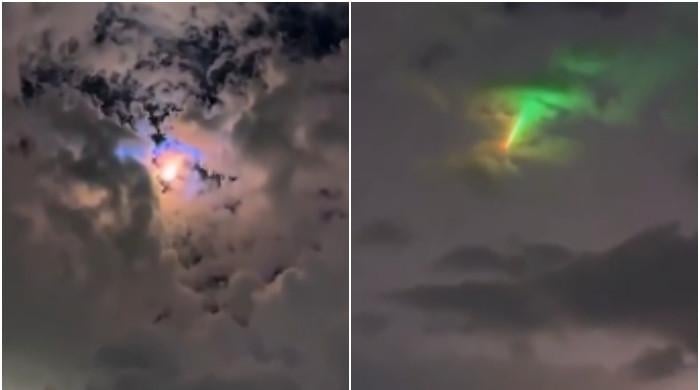First-ever comet material discovered on Earth
JOHANNESBURG: A comet exploded over modern-day Egypt 28 million years ago, raining down fire and leaving behind a "mysterious" black pebble -- the first-ever comet material found on Earth,...
October 09, 2013
"Comets always visit our skies -- they're these dirty snowballs of ice mixed with dust -- but never before in history has material from a comet ever been found on Earth," said professor David Block at South Africa's University of the Witwatersrand.
Egyptian pharaoh Tutankhamun had a scarab broach made from yellow silica glass created when the comet's explosion heated sand to 2,000 degrees Celsius (3,600 degrees Fahrenheit).
But also left behind was the first comet material discovered on Earth -- a black pebble embedded in the modern-day Sahara's sands, the university said in a statement.
The pebble was "the first ever evidence of a comet entering Earth's atmosphere and exploding, raining down a shock wave of fire which obliterated every life form in its path," it said.
South African scholars headed a team of geoscientists, physicists and astronomers who tested the pebble, which was found in 1996.
It had "been sitting around for a long time" until it ended up with a team member studying diamonds, according to Johannesburg University professor Jan Kramers.
The shock of impact created microscopic diamonds on the pebble, but studies showed this was no ordinary bit of stone.
The 30-gramme (one-ounce) pebble had a clear "extraterrestrial component" yet was distinctly different from meteorites, said Kramers.
"If you compare it with meteorites... they contain only about three percent carbon. And this thing contains 65 percent carbon," he told AFP.
Chemical tests led the experts to "the inescapable conclusion that it represented the very first known hand specimen of a comet nucleus," according to the University of the Witwatersrand.
Previous comet material has only been found in dust in the Earth's atmosphere or carbon-bearing dust in Antarctic ice.
"NASA and ESA (the European Space Agency) spend billions of dollars collecting a few microgrammes of comet material and bringing it back to Earth," said Kramers, who is the head writer of an upcoming peer-reviewed article on the discovery.
"Now we've got a radical new approach of studying this material, without spending billions of dollars collecting it," he added.
Though only one was discovered, many more such stones are thought to litter the desert in the 6,000-kilometre (3,700-mile) area where the comet struck.
Named after Hypatia, the famous astronomer from Alexandria born in the year 350, the pebble will help future study into where our own planetary system comes from, said the Witwatersrand's Block.
"Comets contain the very secrets to unlocking the formation of our solar system and this discovery gives us an unprecedented opportunity to study comet material first hand," he said. (AFP)











